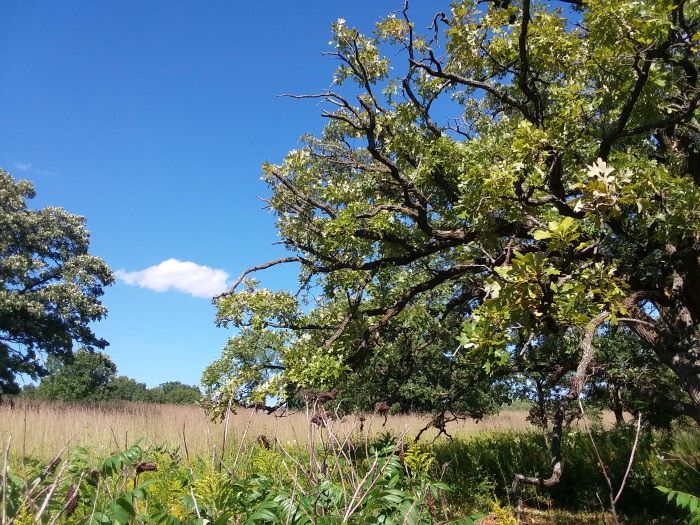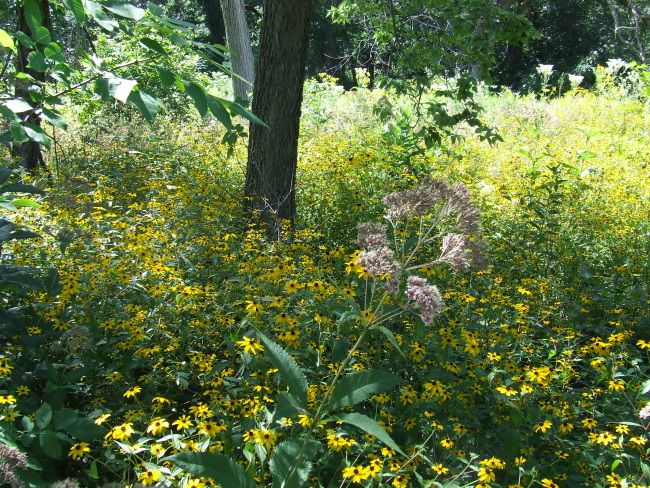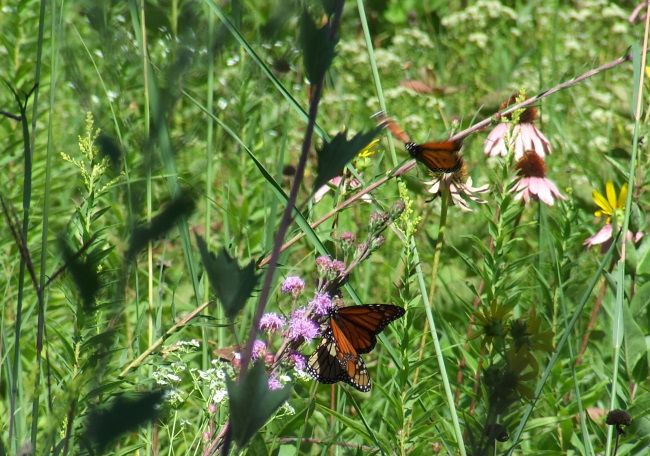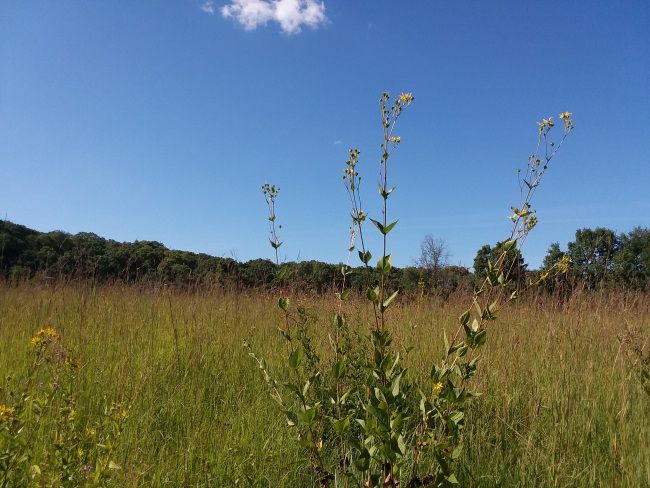I love flora and appreciate its role in the ecosystem. I really do. While keeping flowers alive is a skill I do not possess, I enjoy looking at them, smelling their sweet scents. Trees. I love trees! They provide shade in the summer and leaves to clog my gutters in the autumn. Although it has been a while, I have tapped maple trees and boiled their sap until it was transmogrified into a delicious syrup. I am definitely pro-plant. I'm just not very good at identifying them.
In an
attempt to remedy this situation, I went on a nature walk back in August at
Owen Conservation Park on Madison's west side. I have walked it before but in
the early spring and late autumn so I was looking forward to seeing the place
in all of its verdant aestival glory. As a treat, there would be a naturalist
leading a tour who specialized in the flora.
The park was
formerly the summer home & farm of a University professor named – quelle
surprise! - Edward T. Owen. If you wander the western part of the park near the
parking lot, you'll find the farm's root cellar and the terraces Owen had
constructed. Today the fields are given over to savannah and prairie
restoration.
There were
yellow flowers everywhere and these I do recall the name of – Rudbeckia.
Our guide
pointed out some Goldenrod to the side of the trail and I think I caught a
couple bugs mid coitus.
We saw some off in the distance.
I have to
look at the city parks calendar to see what walks are coming up. There could
be a walk again through Owen but with someone who knows the fauna. Or
perhaps a stroll through a different park with a mycologist who will point out
all of the varieties of mushrooms and tell us which ones are edible and which
ones will take you on a far-out psychedelic trip, man.
Speaking of
psychedelics, I have read that it is a burgeoning area of research for
treatment of psychological disorders such as depression. The university has
just created the UW–Madison Transdisciplinary Center for Research in Psychoactive Substance where they seek to help people with careful
administration of magic mushrooms or at least the psylocibin found therein. There is
also a private company in town called the Usona Institute doing the same kind
of research.
She was born in Milwaukee and studied at UW-Madison where she met her husband, Arvid Harnack in the 1920s. Harnack hailed from Germany and the pair moved there. They witnessed the rise of Hitler and were appalled and brave enough to join the resistance movement. The Harnacks helped Jews escape Germany and relayed intelligence to the Allies. In 1943 they were captured and executed. Mildred must have been a big thorn in the Nazi's side as she was beheaded at the direct request of Hitler himself.
Mildred Harnack is not a particularly well-known figure, I grant you, but Donner's book is hardly the first time someone has told her story. Wisconsin Public Television did a show about her back in 2011.
Bonus photos – a then & now set. Not a perfect match but good enough.










No comments:
Post a Comment